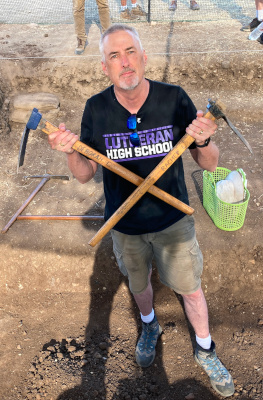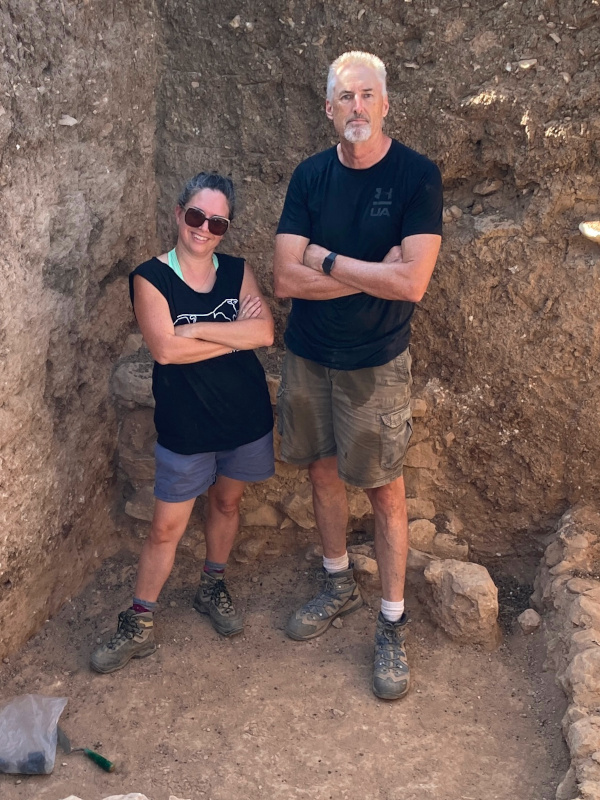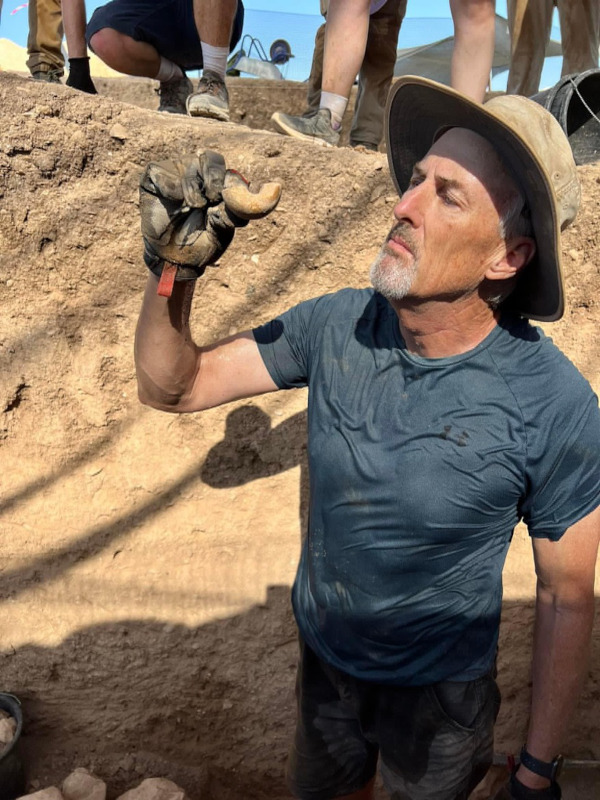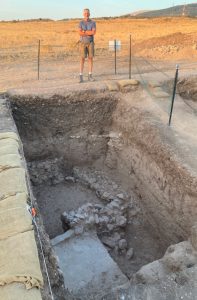
An Adventure of a Lifetime
When I was a young boy, I dug holes in my parent’s backyard. I’m pretty sure I wasn’t expecting to find anything. I just liked to dig. I also read books about pirates and buried treasure. When asked, I would say my plan when I grew up was to find pirate treasure buried on remote Caribbean islands.
Being a volunteer on an excavation in Israel is the grownup version of that young boy’s dream. Spoiler alert: the experience surpassed my expectations, and I am obsessed with it.
Going on “a dig” starts way before the long plane ride. For me, it meant going to the gym every day after work to get (and stay) in shape. I’m 63-years old, with a desk job, and didn’t want to be that “old guy”. I wanted to pull my weight and show the young grad students what hard work looks like. To wield a pickaxe and turia tirelessly for extended hours in 95-degree F heat. To “bucket-chain” over 1,000 buckets of dirt out of the excavation area every day without breaking a sweat (that’s an exaggeration – I sweated plenty).
Not everyone on the dig team started out as gung-ho as me. Some of the college kids didn’t have manual labor experience. But it didn’t take long for them to ramp up. It’s pretty awesome to see twenty-something guys and gals quickly learn how to dig. How hard can it be? Of course, anybody can “dig”. What I’m talking about is next level. Like, listening to the sound the pickaxe head makes when it hits the ground. Or feeling that difference flow up through the shaft handle to your hands. Was that soft dirt, hard dirt, mudbrick, pottery, stone, or an artifact? I’m totally serious. It’s a real thing.
One surprise is the focus of the dig director and supervisors at my site to make everyone’s experience a great one. Volunteers get training, mentoring, and meaningful assignments. First timers are not relegated to menial tasks. One of my roommates was in his thirties and has a desk job like me back in the States. He used his entire three weeks of annual vacation time to be a volunteer on the dig. He loved it.
There are side benefits too. Being on a dig isn’t just that three week or six-week session. It turns into a life experience. Not just the memory aspect of it. It can motivate you to care more about your physical condition and health. You make friends from all over the world and stay in contact on social media. It makes you more interesting to your family and friends, having unique stories to tell and pictures to share. If you read the Bible or history books it gives you “I was there” pictures in your mind of the real thing.
Did we find cool stuff? Of course. Ancient walls and plastered floors – from thousands of years ago. A 3,500-year-old bronze axe head. Ceramic jugs and bowls. A pottery sherd with an Egyptian hieroglyph. A cylinder seal. Large threshold stones leading into a temple – carved from volcanic basalt. And on and on.
One of my favorite pictures from this summer at Tel Hazor Lower City is of me standing above the “hole” I helped dig in six weeks. By itself, the picture isn’t amazing. But when I tell the people I show it to that we started at ground level in the year 2023, and six weeks and nine feet later it was the year 1750 BC more than 3,700 years ago – it becomes amazing! Lots of people like movies and books about time travel; sitting comfortably watching a movie or reading a book. I was there. I touched the stones and artifacts. I time traveled. Words cannot adequately express this phenomenon. You’ll just have to go to a dig one of these summers and see for yourself.
Today I’m writing this report back home in Colorado. When I finish it, I’ll be heading to the fitness gym to work out because the countdown app on my phone says 299 days from now I will be flying from Denver to Tel Aviv because I’m going back. I can hardly wait to see what our team is going to find next summer. Maybe I’ll see you there.



